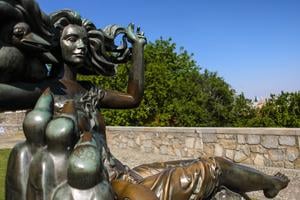If you walk from Bratislava Castle towards the city centre, leaving via the castle’s Nicholas Gate and passing the Church of St Nicholas, on your way you will come across a bronze statue depicting a woman with flowing hair and accompanied by a flock of ravens. In the late 1980s, sculptor Tibor Bartfay dedicated the statue, named Girl with Ravens or The Bratislava Witch, to the memory of the women burned as witches in Bratislava, or Pressburg as it was then known. One of the first such executions to be recorded was that of Agáta Tóthová-Barlabášová from the village of Podunajské Biskupice, which is now part of Bratislava.
“She was accused of witchcraft and subsequently imprisoned and tortured in the dungeons of the Old Town Hall,” said Alexandra Ballová, historian and expert librarian at the Bratislava City Museum (MMB), during a lecture in the Old Town Hall in mid January.
Under torture, Agáta confessed that she had harmed a local butcher whose business had declined, and that she had caused infertility or blindness to local women. She “admitted” that she had done so in collaboration with other women from the same village.
“She also confessed to participating in witches’ sabbaths, communing with the devil, flying on a broomstick, and named other witches who allegedly had more power than her and who were supposed to commit murder in the village,” said Ballová.
Agáta was burned alive on May 24, 1602 on a balefire – a type of pyre used to burn witches – built in the area between present-day Župné and Hurbanovo Squares, in central Bratislava.



 The sculpture known as Girl with Ravens or the Bratislava Witch. (source: Secret City Trails)
The sculpture known as Girl with Ravens or the Bratislava Witch. (source: Secret City Trails)


